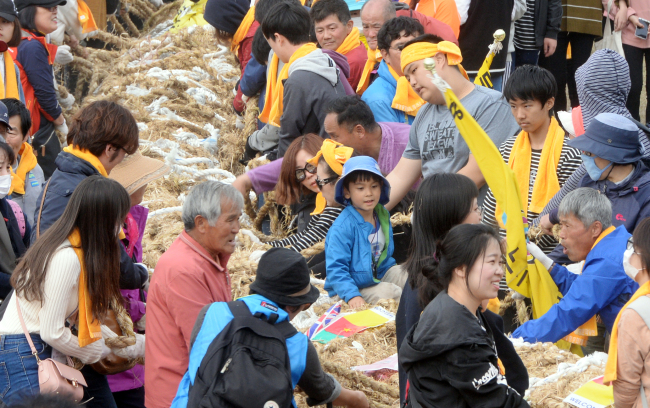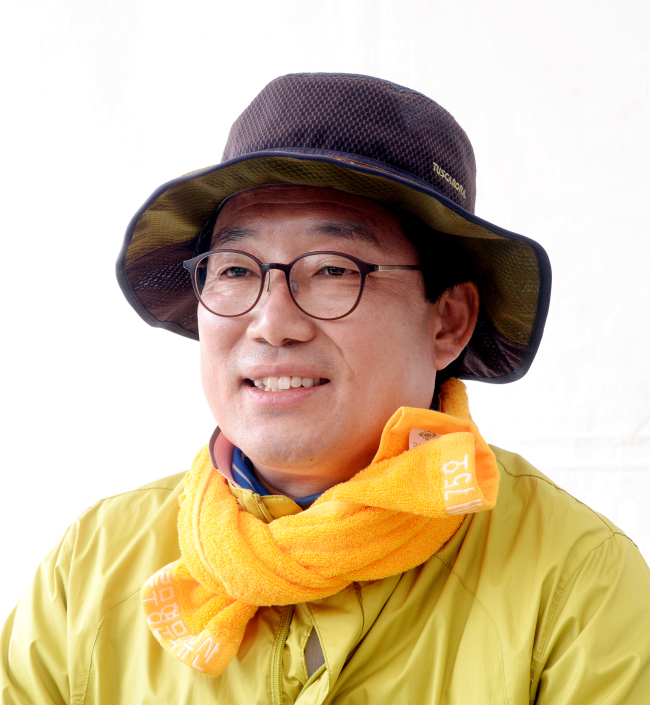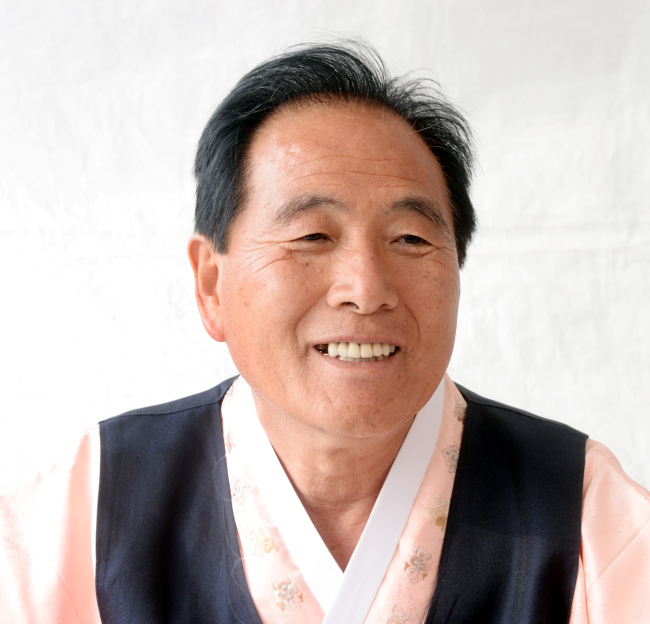DANGJIN, South Chungcheong Province -- On Sunday, the sprawling yard behind the Gijisi Juldarigi Museum was packed with residents of the city of Dangjin, South Chungcheong Province, all engaged in a joint effort to achieve one goal: to pull a gigantic 1-meter-wide, 200-meter-long, 40-metric ton rope into place for a game of tug-of-war.
Bits of straw filled the air along with the shouts of festivalgoers, from children to the elderly, anticipating the 500-year-old event about to take place.
The Gijisi Juldarigi Festival, which celebrates the Korean traditional form of tug-of-war, is thought to have begun as a ritual to unite the community. Legend has it peace reigns in the winning side’s region while the losing side will have a bountiful harvest. It is a win-win for everybody.
The next big hurdle facing the festival, two years after its designation as a UNESCO Intangible Cultural Heritage in December 2015, is how to pass on the centuries-old tradition to the next generation, the chairman of the festival organizing committee, Cho Seong-chun, told The Korea Herald.
“We’re keeping to the same methods used back when the (game) started during King Seonjo’s reign (1567-1608),” he said. “Even the smallest piece of rope is made by hand.”
 |
Crowds pull the rope into place at the Gijisi Juldarigi Festival on Sunday. (Park Hyun-koo/The Korea Herald) |
Produced by weaving together hundreds of smaller straw threads, the rope used in the match takes over a month to complete. This year, the process began on Feb. 20 and was completed on March 30, involving some 40 pairs of hands every day.
“We have 10 or so master craftsmen overseeing the process,” said Cho. But as they age, the festival organizers are actively recruiting new trainees through online and offline ads. Five volunteers in their 40s are currently learning the craft.
“But (the number of people) is still much less than sufficient. We still need to gather 10, 20 more. We welcome all volunteers who are interested in this tradition and in the preservation of Korean tradition in general.”
While the festival staunchly defends the old ways, it is also seeking to become a global event.
“We have plans to cooperate with the governments of China, Sri Lanka, Cambodia, Russia and other countries and invite foreign guests to participate,” Dangjin Mayor Kim Hong-jang said.
“This year, we’ve invited some 380 foreign exchange students, and multicultural families to join us.”
 |
Dangjin Mayor Kim Hong-jang speaks to The Korea Herald at the Gijisi Juldarigi Festival on Sunday. (Park Hyun-koo/The Korea Herald) |
 |
Chairman of the Gijisi Juldarigi Festival organizing committee Cho Seong-chun speaks to The Korea Herald at the Gijisi Juldarigi Festival on Sunday. (Park Hyun-koo/The Korea Herald) |
International participants including Sri Lankan students sporting T-shirts with the country’s national flag and a family with two Cambodian-Korean children were at the event.
“We’re advertising through university portal websites. It’s a chance for foreign nationals to parade their country while enjoying Korea,” said Cho.
The juldarigi, or Korean tug-of-war, centers on cooperation and friendly competition, efforts that are much-needed in today’s Korea, according to Kim.
“We’re living in times of division according to age, wealth and region. The theme of this year’s event is to make the world one through our rope. I hope Korean people can come together through (our event).”
The city has plans to build better infrastructure for tourists, he said.
“Each year we receive some 100,000 visitors during this time, but parking spaces are few. We will work to make improvements.
“We need to turn the surrounding areas into an international tourist site, befitting the honor of the UNESCO designation.”
Kim hopes to develop Dangjin, which sits on the Asan Bay protruding into the Yellow Sea, into a waterside resort complete with a marina and water sport facilities.
“We’re working on procuring investments from Chinese companies to build a waterpark. We will be submitting plans to the Ministry of Oceans and Fisheries by October and hope to begin construction early next year.”
By Rumy Doo (
doo@heraldcorp.com)










